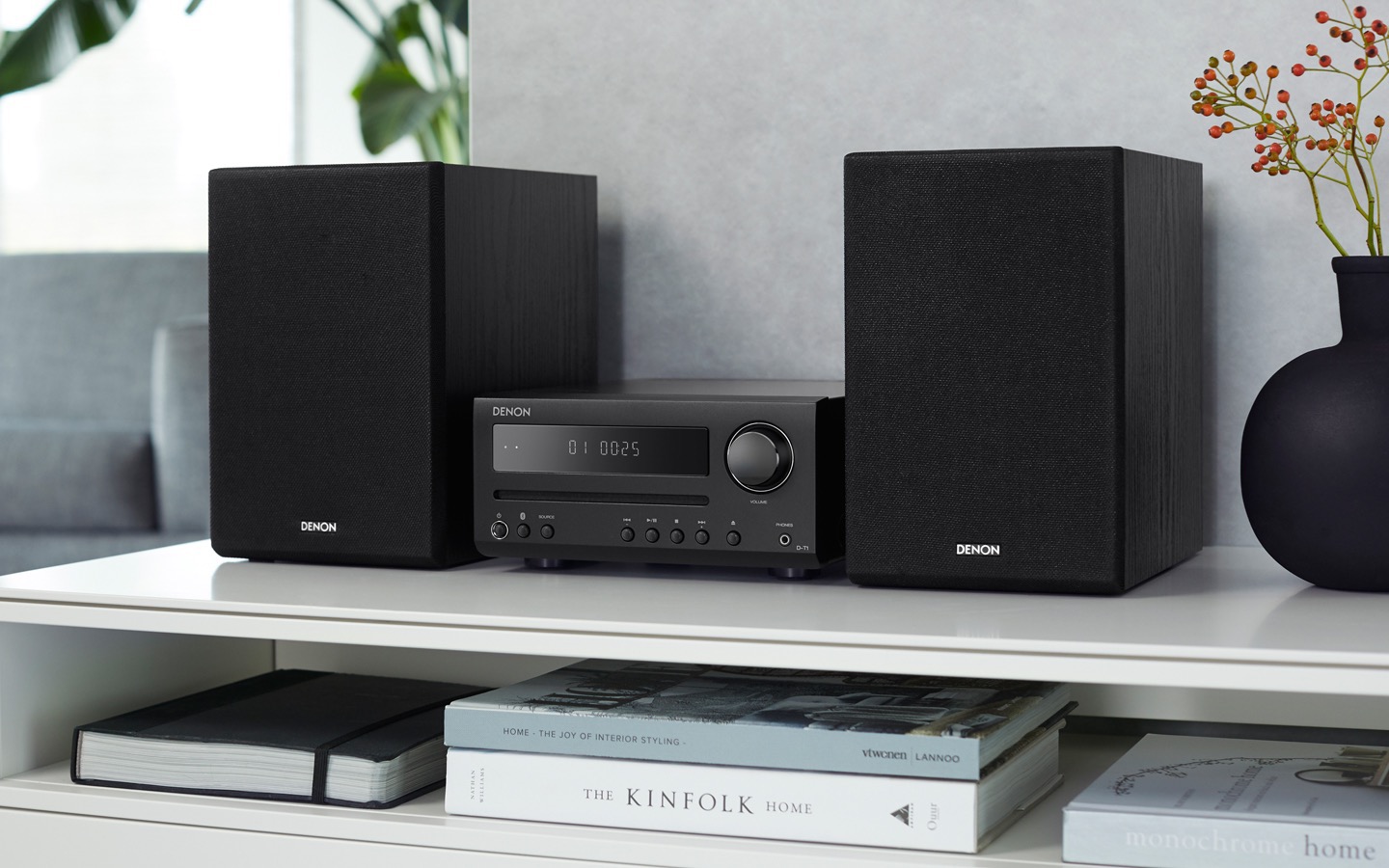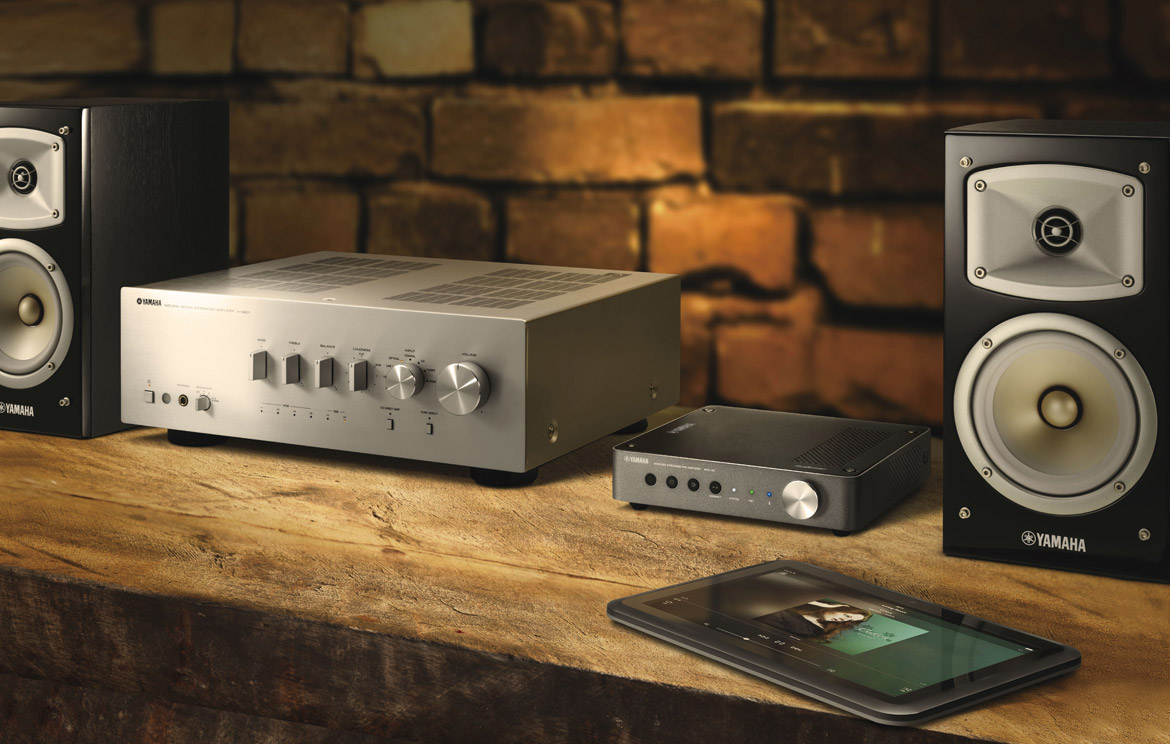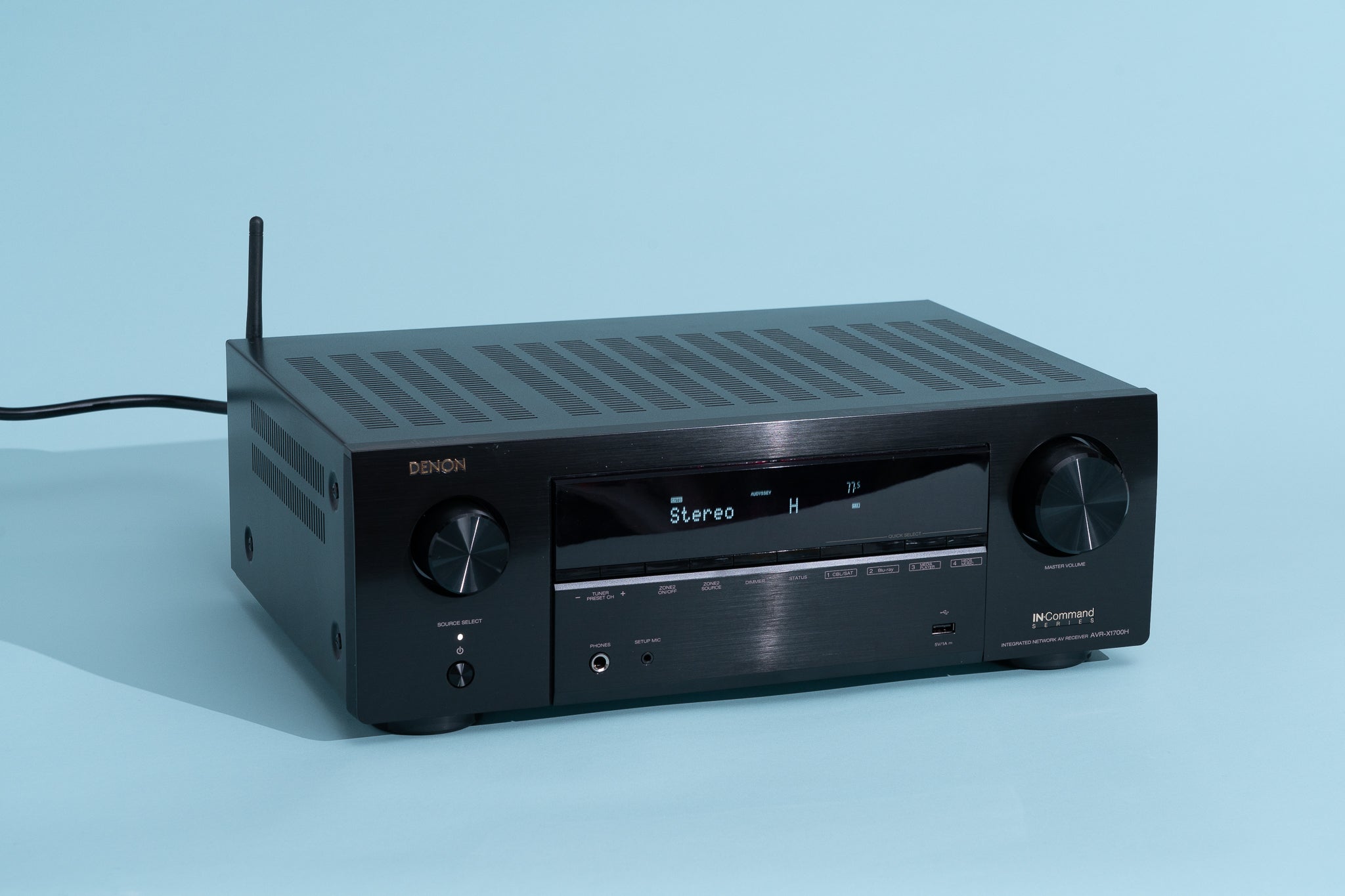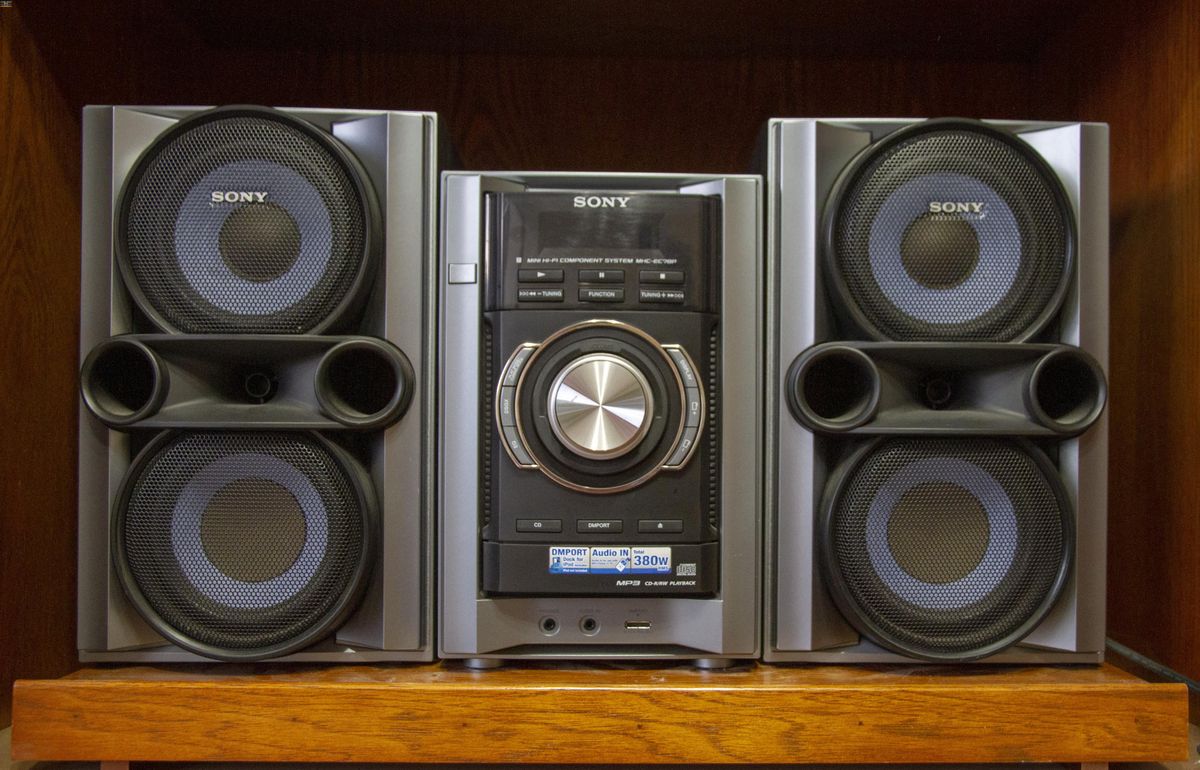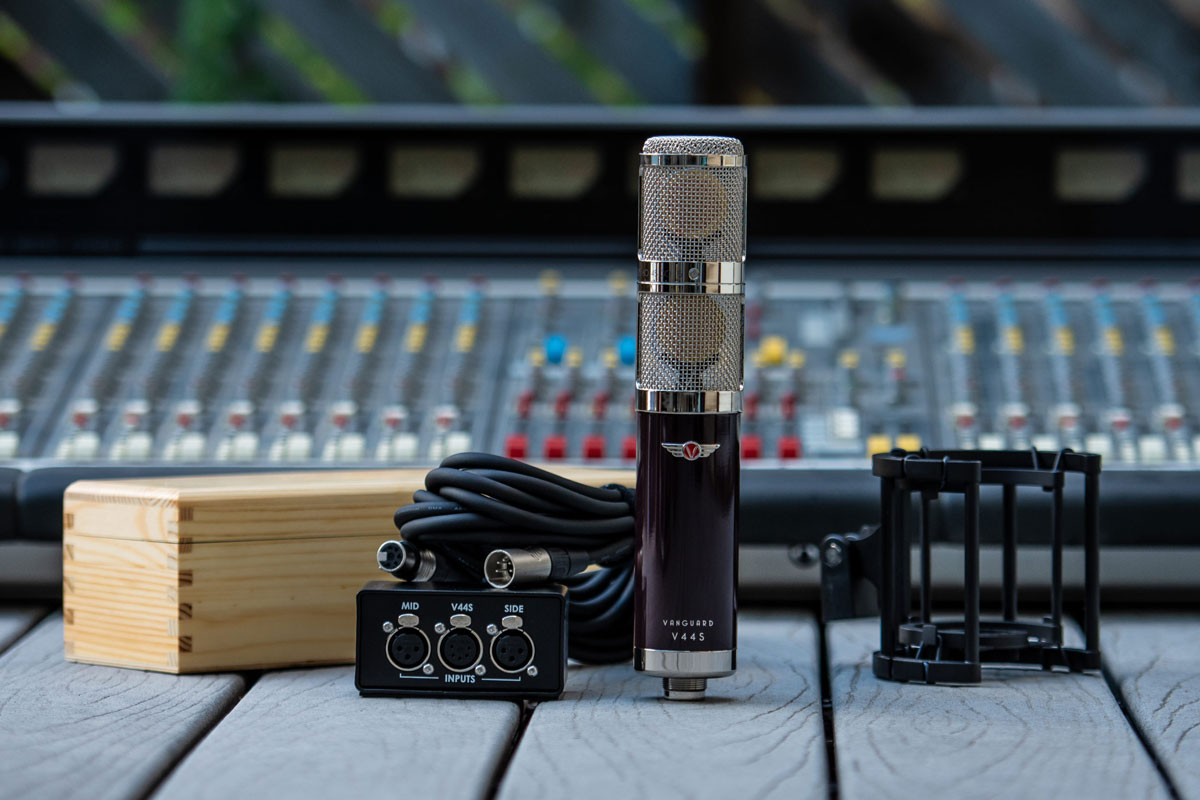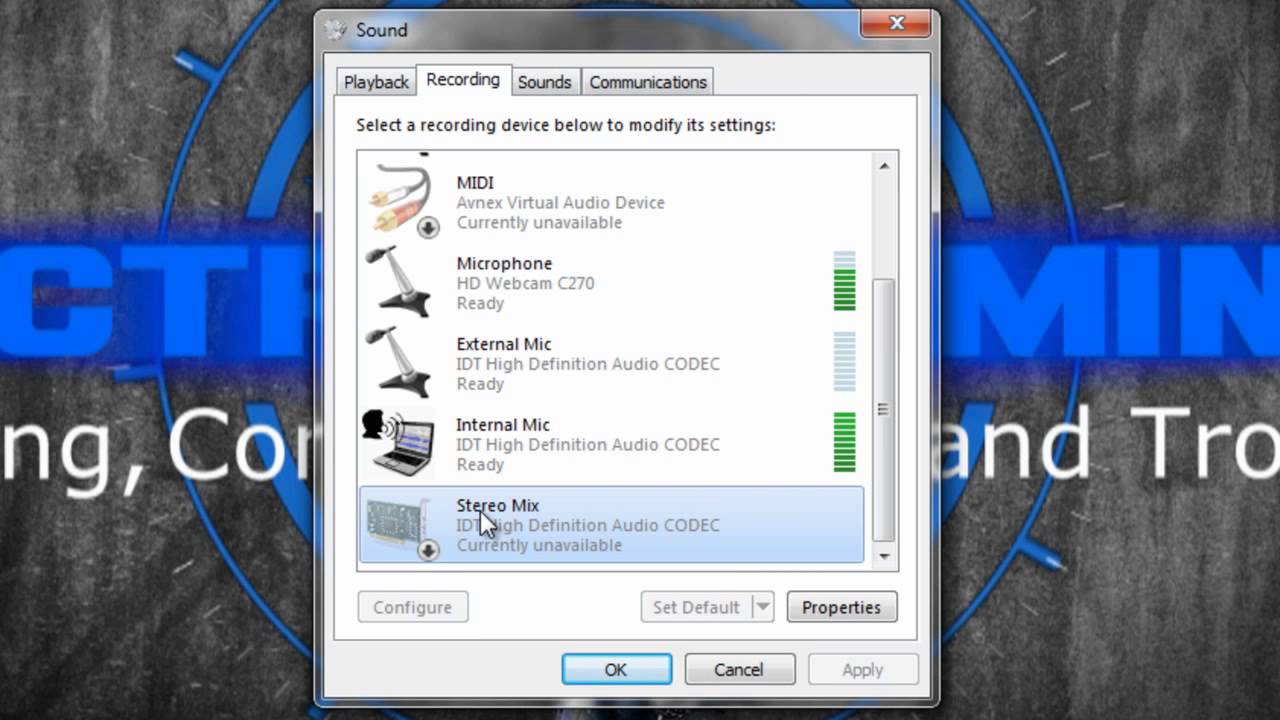Home>Production & Technology>Stereo>What Are Stereo Headphones
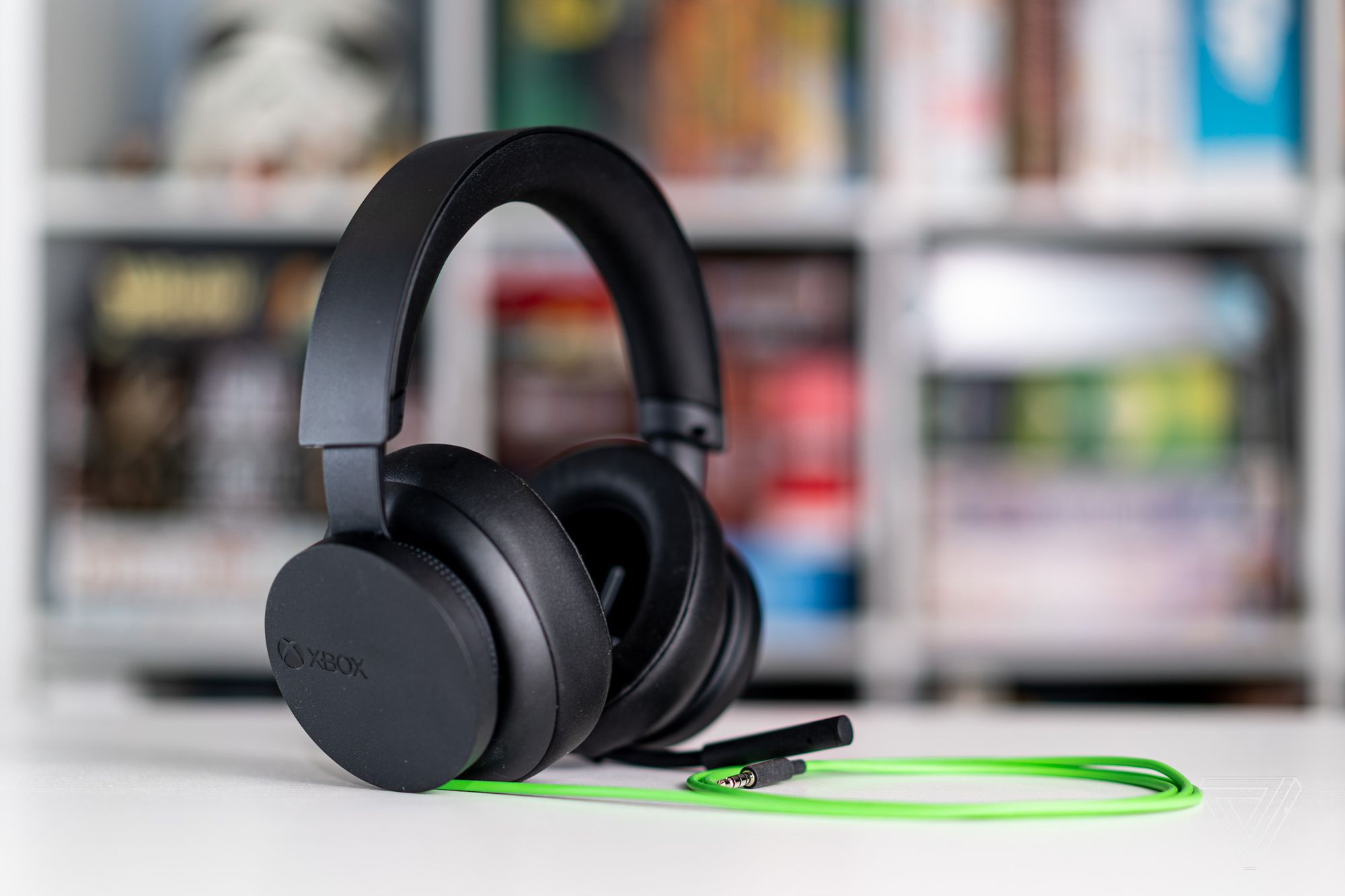

Stereo
What Are Stereo Headphones
Modified: January 22, 2024
Discover the immersive audio experience with stereo headphones. Whether you're a music lover or a gamer, explore the true depth and clarity of sound like never before.
(Many of the links in this article redirect to a specific reviewed product. Your purchase of these products through affiliate links helps to generate commission for AudioLover.com, at no extra cost. Learn more)
Table of Contents
Introduction
Welcome to the world of stereo headphones! In this article, we will delve into the fascinating realm of audio technology and explore the wonders of stereo headphones. Whether you’re a music enthusiast, a gamer, or someone who simply enjoys immersive audio experiences, stereo headphones are an essential piece of equipment that can transport you into a realm of rich sound.
Stereo headphones have revolutionized the way we listen to music, watch movies, and play games. These amazing devices allow us to experience sound in a way that feels lifelike, as if we’re right there in the midst of the action. But what exactly are stereo headphones, and how do they work?
At their core, stereo headphones are a pair of small speakers that you wear directly on or over your ears. They are designed to reproduce sound in a way that mimics the way we naturally perceive it in the real world, providing a sense of depth and spatiality. By having separate speakers for the left and right channels, stereo headphones can create a three-dimensional audio experience that enhances our enjoyment of music, movies, and games.
So how does this magic happen? Stereo headphones work by utilizing a technique called stereo sound, where two audio channels (left and right) are combined to create a sense of directionality. The left channel audio is sent to the speaker on the left side of the headphones, while the right channel audio is sent to the speaker on the right side. This separation of audio channels allows us to perceive sound as coming from different directions, giving us a realistic and immersive listening experience.
There are various types of stereo headphones available in the market, each offering its own unique features and advantages. From over-ear headphones that provide superior sound isolation to in-ear headphones that offer portability and convenience, there is a wide range of options to suit different preferences and needs.
Choosing the right stereo headphones can greatly enhance your audio experience. Factors to consider include sound quality, comfort, durability, connectivity options, and the specific use case (e.g., gaming, music, or studio recording). It’s worth investing some time in researching and reading reviews to find the perfect pair that matches your requirements.
In the next sections, we will explore the different types of stereo headphones, their benefits, important factors to consider when choosing headphones, and some tips for using them effectively. So, let’s dive in and uncover the world of stereo headphones!
Definition of Stereo Headphones
Stereo headphones, also known as stereo earphones or simply headphones, are audio devices that allow individuals to enjoy sound directly in their ears. They consist of a pair of small speakers, one for each ear, that deliver audio signals from a connected source. These speakers are specifically designed to reproduce sound in a way that creates a sense of depth and spatiality.
Unlike mono headphones, which have a single speaker that plays the same audio signal in both ears, stereo headphones provide separate audio signals to each ear. This creates the illusion of sound coming from different directions, adding a realistic and immersive dimension to the listening experience.
The term “stereo” refers to the technique of recording, reproducing, and broadcasting sound using two separate channels – left and right. Stereo headphones are engineered to accurately reproduce this stereo sound, ensuring that the listener perceives a balanced and accurate representation of the audio.
One of the key advantages of stereo headphones is their ability to create a soundstage, a virtual environment where different instruments or sound sources can be positioned. This adds a sense of depth and realism to the audio, making it feel more natural and engaging.
Stereo headphones come in various designs and can be categorized into different types based on their form factor. Over-ear headphones, also known as circumaural headphones, completely cover the ears, providing superior sound isolation and comfort. On-ear headphones, or supra-aural headphones, sit on the ears and offer a more portable and lightweight option. In-ear headphones, often referred to as earbuds or earphones, fit directly into the ear canal, providing a snug fit and excellent noise isolation.
The use of stereo headphones is not limited to listening to music. They are widely utilized in various domains, including gaming, filmmaking, broadcasting, audio production, and communication. Stereo headphones allow gamers to fully immerse themselves in virtual worlds, filmmakers and sound engineers to create precise audio mixes, and professionals to communicate clearly in audio conferences.
In summary, stereo headphones are advanced audio devices that reproduce sound in a way that creates a sense of depth and spatiality. By utilizing separate speakers for each ear and accurately reproducing stereo sound, they enhance the listening experience and provide a more immersive and realistic audio environment.
How Stereo Headphones Work
Understanding how stereo headphones work involves exploring the principles of stereo sound reproduction and the technology behind these remarkable audio devices.
At their core, stereo headphones consist of two main components: the audio source and the headphones themselves. The audio source can be anything from a smartphone or tablet to a computer, gaming console, or audio system. It generates the audio signals that are transmitted to the headphones.
When an audio signal is played through stereo headphones, it is typically split into two separate channels: the left channel and the right channel. Each channel carries audio information specific to that side, enabling the listener to perceive sound coming from different directions.
The headphones receive these audio signals and utilize separate speakers or drivers for each channel. The left channel audio signal is sent to the speaker located on the left side of the headphones, while the right channel audio signal is sent to the speaker on the right side. This separation of channels creates a stereo effect, as if the sound is originating from different directions.
In order to create a balanced and accurate reproduction of sound, stereo headphones employ various techniques and technologies. One such technique is binaural recording, which uses specialized microphones to capture sound from two distinct points simulating the position of the listener’s ears. This technique helps preserve the spatial cues and nuances of the original audio, ensuring a more realistic and enveloping sound experience with headphones.
Another important aspect of stereo headphone technology is the frequency response of the speakers. The frequency response refers to the range of frequencies the headphones are capable of reproducing. High-quality stereo headphones are designed to have a wide frequency response, allowing them to accurately reproduce both low and high-frequency sounds, resulting in a more detailed and vibrant audio experience.
Furthermore, stereo headphones may incorporate sound isolation or noise cancellation technologies. Sound isolation works by physically blocking out external noise, such as the ambient sounds in a busy environment, to enhance the clarity and immersion of the audio. Noise cancellation technologies actively analyze incoming sounds and generate an inverted sound wave to cancel out external noise, improving the audio quality even further.
To ensure an optimal listening experience, it is important to choose stereo headphones that are comfortable and provide a good fit. This helps to create an optimal seal around the ears or in the ear canal, effectively isolating the audio and preventing sound leakage.
In summary, stereo headphones work by receiving audio signals from an audio source and utilizing separate speakers or drivers to reproduce the left and right channels. They rely on techniques such as binaural recording and technologies like sound isolation and noise cancellation to create a realistic and immersive sound experience.
Different Types of Stereo Headphones
Stereo headphones come in various types and designs, each offering unique features and benefits. Understanding these different types can help you choose the style that best suits your needs and preferences.
1. Over-ear Headphones: Also known as circumaural headphones, over-ear headphones feature large ear cups that completely enclose the ears. They provide excellent sound isolation, blocking out external noise for a more immersive listening experience. Over-ear headphones are known for their comfortable fit and often offer superior sound quality, making them popular among audiophiles and professionals in audio production.
2. On-ear Headphones: On-ear headphones, or supra-aural headphones, rest on the ears rather than enclosing them fully. They are more portable and lightweight compared to over-ear headphones, making them a great option for those who are always on the go. On-ear headphones offer a good balance between sound quality and portability, and they are often more affordable than their over-ear counterparts.
3. In-ear Headphones: In-ear headphones, commonly referred to as earbuds or earphones, fit directly into the ear canal. They are compact, lightweight, and highly portable, making them a popular choice for those who value convenience. In-ear headphones provide excellent noise isolation, blocking out external sounds effectively. They come in different designs, including wired and wireless options, and are often bundled with mobile devices.
4. Earhook/Earclip Headphones: Earhook or earclip headphones have a unique design that wraps around the ears, providing a secure and comfortable fit. These headphones are ideal for sports activities or situations where you need your headphones to stay in place, even during vigorous movement. They are lightweight and often wireless, offering convenience and freedom of movement.
5. Bone Conduction Headphones: Bone conduction headphones work differently from traditional headphones. Instead of using speakers placed over or in the ears, these headphones transmit sound vibrations through the bones of the skull, directly stimulating the inner ear. They bypass the eardrums, making them a viable option for individuals with hearing impairments. Bone conduction headphones also allow users to hear ambient sounds, making them popular for athletes or outdoor enthusiasts who need to remain aware of their surroundings.
6. Wireless Headphones: Wireless stereo headphones connect to audio devices via Bluetooth or other wireless technologies, eliminating the need for cables. They offer the freedom of movement without the hassle of tangled cords. Wireless headphones are available in various styles, including over-ear, on-ear, and in-ear, and often provide long battery life for extended use.
It’s important to consider factors such as sound quality, comfort, durability, and connectivity options when choosing stereo headphones. Each type of headphone has its own advantages and it’s worth trying out different styles to determine which one suits your preferences and needs the best.
Whether you prioritize sound isolation, portability, or wireless convenience, there is a type of stereo headphones that is perfect for you.
Benefits of Using Stereo Headphones
Stereo headphones offer a range of benefits that enhance your audio experience and provide numerous advantages over other audio playback options. Here are some key benefits of using stereo headphones:
1. Immersive Audio Experience: Stereo headphones create a sense of depth and spatiality, allowing you to fully immerse yourself in the audio. Whether you’re listening to music, watching movies, or playing games, stereo headphones provide a more realistic and engaging audio experience that enhances your enjoyment and entertainment.
2. Enhanced Audio Clarity: Stereo headphones are designed to accurately reproduce sound, ensuring that you hear a balanced and detailed audio presentation. With separate speakers for the left and right channels, stereo headphones provide a clearer and more defined soundstage, enabling you to pick up subtle nuances and enjoy the full range of frequencies.
3. Noise Isolation: Many stereo headphones provide effective noise isolation, blocking out external sounds and distractions. This is particularly beneficial when you’re in a noisy environment or when you want to fully focus on your music, movies, or games. Noise isolation allows you to hear the audio more clearly without interference from the surrounding noise.
4. Privacy and Confidentiality: Stereo headphones allow you to enjoy your audio content without disturbing others around you. Whether you’re in a public space, studying in a library, or simply want to have a private listening experience, stereo headphones provide the confidentiality you need while immersing yourself in your favorite audio.
5. Versatility: Stereo headphones can be used with a wide range of devices, including smartphones, tablets, laptops, gaming consoles, and audio systems. This versatility allows you to enjoy quality audio in various scenarios, making them a convenient and versatile accessory.
6. Portability: Many stereo headphones are designed to be lightweight and portable, making them easy to carry with you wherever you go. Whether you’re traveling, commuting, or exercising, stereo headphones offer a compact and convenient solution for enjoying your favorite audio content on the go.
7. Personalization: Stereo headphones come in various designs, styles, and even customizable options, allowing you to express your personal taste and preferences. You can choose from different colors, materials, and sizes to find headphones that match your style and provide a comfortable fit.
8. Compatibility: With the widespread availability of audio devices featuring headphone jacks or wireless connectivity, stereo headphones are compatible with a wide range of audio sources. They can be easily connected to smartphones, tablets, computers, gaming consoles, and smart TVs, offering a seamless and hassle-free setup.
In summary, stereo headphones offer an immersive audio experience, enhanced audio clarity, noise isolation, privacy, versatility, portability, personalization, and compatibility. Whether you’re a music lover, a gamer, or someone who enjoys quality audio, stereo headphones provide numerous benefits that enhance your listening experience and allow you to enjoy your favorite audio content to the fullest.
Factors to Consider When Choosing Stereo Headphones
When it comes to choosing the right stereo headphones, several factors should be taken into consideration to ensure you find a pair that best suits your needs and preferences. Here are some key factors to consider:
1. Sound Quality: One of the most essential factors to consider is the sound quality of the headphones. Look for stereo headphones that offer a wide frequency response range, accurate audio reproduction, and well-balanced sound. Consider reading reviews or listening to sample tracks to assess the audio performance before making a purchase.
2. Comfort: The comfort of the headphones is crucial, especially if you plan on using them for extended periods. Look for headphones with soft ear cushions, an adjustable headband, and a lightweight design. Over-ear headphones should fit comfortably around the ears without causing discomfort or pressure points.
3. Durability: Consider the build quality and durability of the headphones. Look for sturdy materials, reinforced cables, and quality construction. If you plan on using the headphones in more rugged environments or during physical activities, consider options specifically designed for durability and resilience.
4. Wired or Wireless: Decide whether you prefer wired or wireless stereo headphones. Wired headphones typically offer a more reliable audio connection and may provide higher audio quality. Wireless headphones provide freedom of movement and convenience, but they require battery charging and can be susceptible to interference in crowded wireless environments.
5. Noise Isolation or Noise Cancellation: Depending on your preferences and intended use, consider whether you need headphones with noise isolation or active noise cancellation features. Noise isolation headphones physically block out external sounds, while noise cancellation technology actively reduces or cancels out unwanted noise. These features can be beneficial in noisy environments or during travel.
6. Connectivity Options: If you opt for wireless headphones, check the compatibility with your devices and the range of connectivity options. Look for stereo headphones that support Bluetooth connectivity and provide a stable connection with your preferred audio sources. Ensure they are compatible with the devices you plan to use them with.
7. Design and Style: Consider the design and style of the headphones, taking into account your personal preference and intended use. Choose a design that reflects your aesthetic taste and matches your lifestyle. Whether you prefer sleek and minimalistic designs or bold and vibrant options, there are plenty of choices available to suit your preference.
8. Price and Value: Set a budget based on your requirements and prioritize the features that are most important to you. Consider the overall value of the headphones in terms of the quality, features, and longevity they offer. While it’s tempting to go for the most affordable option, investing in a quality pair of headphones can significantly improve your audio experience in the long run.
By considering these factors, you can make an informed decision when choosing stereo headphones that fit your needs and provide an enjoyable listening experience.
Tips for Using Stereo Headphones
Using stereo headphones optimally can further enhance your audio experience and prolong the lifespan of your headphones. Here are some helpful tips to make the most out of your stereo headphones:
1. Volume Control: Control the volume of your stereo headphones to ensure a safe listening experience. Listening to audio at excessive volumes can damage your hearing over time. Set the volume to a comfortable level, where you can still hear the audio clearly without it being too loud.
2. Take Breaks: It’s important to give your ears and head a break from wearing headphones for prolonged periods. Take regular breaks to give your ears time to rest and recover. Continuous headphone use can cause discomfort or contribute to fatigue.
3. Proper Cleaning and Maintenance: Keep your stereo headphones clean and well-maintained. Wipe down the ear cups and headband regularly to remove dirt and oils. For in-ear headphones, clean the tips or earbuds with a damp cloth or specialized cleaning solution. Proper maintenance can ensure optimal performance and extend the lifespan of your headphones.
4. Fit and Position: Ensure that you wear your stereo headphones correctly for the best sound quality and comfort. Over-ear headphones should fully cover your ears, creating a seal for effective noise isolation. In-ear headphones should fit snugly in your ears without causing discomfort or falling out. Adjust the headband or ear hooks to achieve a secure and comfortable fit.
5. Use EQ and Audio Settings: Experiment with the equalizer (EQ) settings on your audio device to customize the sound according to your preferences. Adjust the bass, treble, and other sound settings to suit the genre of music or audio content you are listening to. These settings can significantly enhance your listening experience and overall audio quality.
6. Handle with Care: Treat your stereo headphones with care to prevent damage. Avoid dropping them or subjecting them to excessive force. When not in use, store them in a protective case or pouch to prevent tangling or damage to the cables. Handling your headphones gently can help maintain their functionality and extend their lifespan.
7. Positioning and Placement: Position your stereo headphones correctly on your head for optimal audio playback. Adjust the headband to a comfortable position and make sure the speakers align properly with your ears. Proper positioning ensures that you get the best audio performance and soundstage.
8. Consider Ambient Sound: Be mindful of your surroundings when using stereo headphones, especially if you are in a busy or hazardous environment. Keep the volume at a level that allows you to hear important sounds and warnings in your surroundings, such as traffic or emergency noises. This is particularly important when you are walking, jogging, or engaged in outdoor activities.
9. Share the Experience: If you want to share your audio experience with others, consider using an audio splitter or headphone amplifier that allows multiple headphones to be connected to the same audio source. This way, you can enjoy your favorite content with friends or family without compromising the audio quality.
10. Regularly Update Firmware: If your wireless headphones have firmware updates available, make sure to update them regularly. Firmware updates often bring performance improvements, bug fixes, and new features that can enhance your listening experience.
By following these tips, you can ensure that you have a comfortable and enjoyable audio experience with your stereo headphones while maintaining their longevity and performance.
Conclusion
Stereo headphones have revolutionized the way we experience audio, providing us with immersive sound, enhanced clarity, and a more personal listening experience. Whether you’re a music lover, a gamer, or someone who appreciates quality audio, stereo headphones offer a wide range of benefits that elevate your audio enjoyment.
In this article, we explored the definition of stereo headphones and how they work to create a three-dimensional audio experience. We discussed the different types of stereo headphones, including over-ear, on-ear, in-ear, earhook/earclip, and bone conduction headphones, each offering unique advantages for different scenarios and preferences.
Moreover, we highlighted the benefits of using stereo headphones, such as the immersive audio experience, enhanced sound quality, noise isolation, privacy, versatility, portability, personalization, and compatibility. We also provided a comprehensive list of factors to consider when choosing stereo headphones, including sound quality, comfort, durability, wired or wireless connectivity, noise isolation, design, and price.
To help you make the most out of your stereo headphones, we shared valuable tips, including controlling volume levels, taking breaks, proper cleaning, and maintenance, finding the right fit and position, using audio settings, handling with care, considering ambient sound, and regularly updating firmware.
In conclusion, stereo headphones are more than just audio devices; they are gateways to a world of rich sound and immersive experiences. Whether you’re enjoying your favorite music, getting lost in captivating movies, or immersing yourself in virtual gaming worlds, stereo headphones enhance the way you perceive and interact with audio.
By understanding the different types, considering important factors, and implementing helpful tips, you can choose the perfect pair of stereo headphones that suit your preferences and needs. So, go ahead, explore the vast world of stereo headphones, and elevate your audio experience to new heights!

